Angles that are opposite and equal
Vertical Angles
What is the symbol that describes an angle?
∠
What is another name of a sequence of transformations?
A composition of transformations
(0.5, 1.5)
A transformation that results in proportional sides and congruent angles is a
Dilation
Name the Theorem which states that the measure of an exterior angle of a triangle is equal to the sum of the measures of the two remote interior angles.
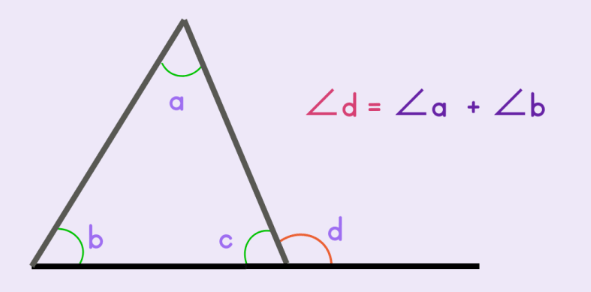
Exterior Angle Theorem
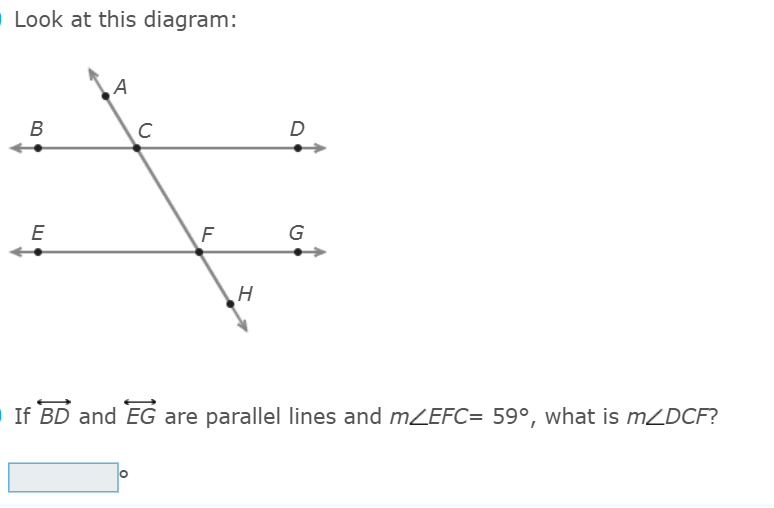
59
Which of the following compositions of transformations create congruent figures?
a) A reflection across the y-axis followed by a dilation with a scale factor of 2/3
b) A reflection across the line x=–5, followed by a translation 5 units left and 3 units down.
c) A dilation with a scale factor of 1 followed by a counterclockwise rotation of 90 degrees about the origin
d) A translation 5 units right, 4 units up followed by a dilation at the origin with a scale factor of 3
b and c are correct.
(A dilation with a scale factor of 1 means you multiply each side length by 1, whcih gives the same number😊 )
Find distance of (-2,3) and (-7,7).
6.403...
An isometry is another name for these types of transformations
Rigid Motions
Name the theorem:
The sum of the measures of the interior angles of a triangle = 180 degrees.
Triangle Angle Sum Theorem
Which angle does NOT have a measure of 60 degrees?

a) \anglePLB
b) \angleDLM
c) \angleALM
d) \angleLMD
b) \angleDLM
Triangle ABC is reflected over the line y=x and then translated by the vector ⟨−4,3⟩. What is the image of point A (2,5) after the sequence?
A'(1,5)
Find the number that is three times as far from 2 as it is from 10.
8
Which transformation rule applies to the graph?
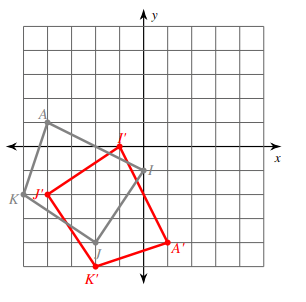
a) Reflections across the line x=2
b) Reflection across the line y=–x
c) Rotation of 180 degrees about the origin
d) Reflection across the line y=x
Which postulate can be used to solve the problem below? Double points for finding the answer
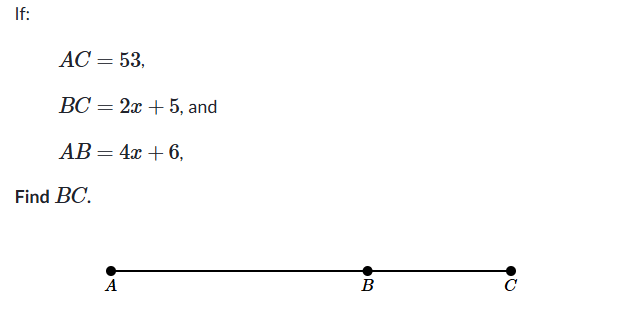
Segment Addition Postulate
BC = 19
Find the value of x
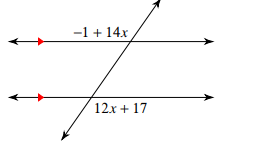
-1+14x=12x+17
14x=12x+18
2x=18
x = 9
A figure undergoes a rotation of 90° counterclockwise about the origin, followed by a dilation with scale factor 1/2 centered at the origin. If the original point was (8, -4), what is the final image point?
Rotation of 90 degrees (8, –4) --> (4,8)
Dilation of 1/2: (4/2, 8/2) ---> (2,4)
(2,4)
Find the point P that splits the line segment from R (2,1) to S (–8, 6) into a 3:2 ratio.
(–4,4)

If Point A is on quadrant II on the coordinate plane. After a 270° clockwise rotation about the origin, in which quadrant is the image located?
Quadrant III
Complete the proof
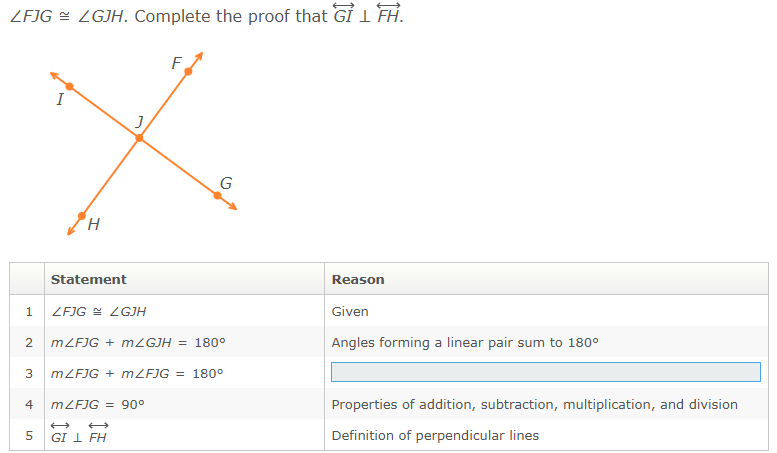
Substitution
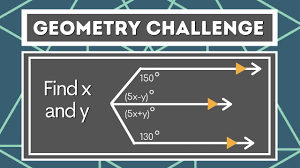
There are multiple ways to solve this one. Take notes.
x = 8
y = 10
When you reflect a figure over the x-axis, then reflect it over the y-axis, this single transformation produces the same result.
A 180 rotation
Which of the labeled points splits segment FA into a 4:1 ratio.
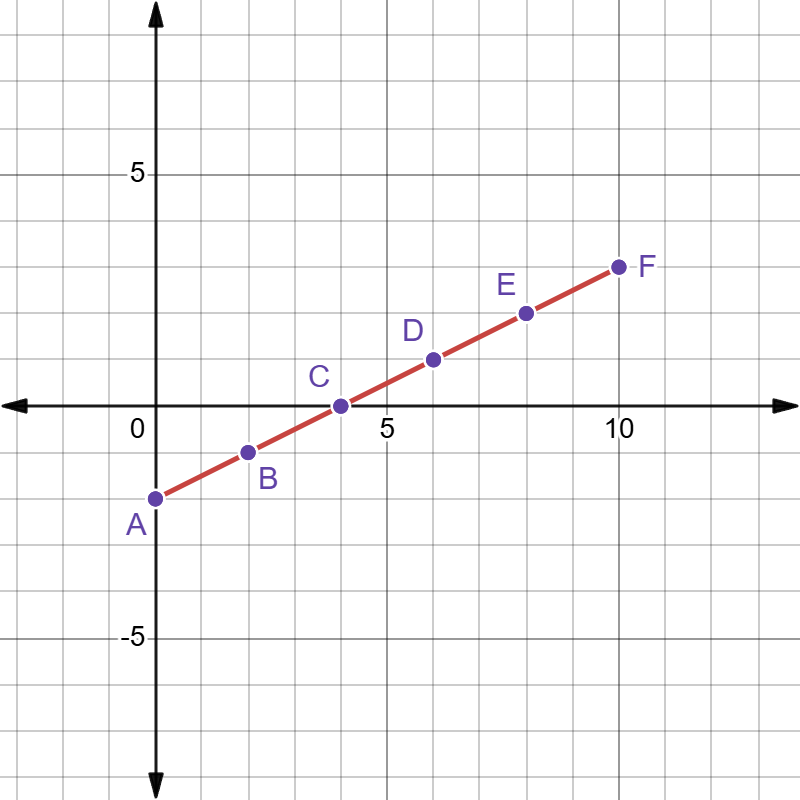
Point B
Which transformation can map triangle ABC onto DEF?
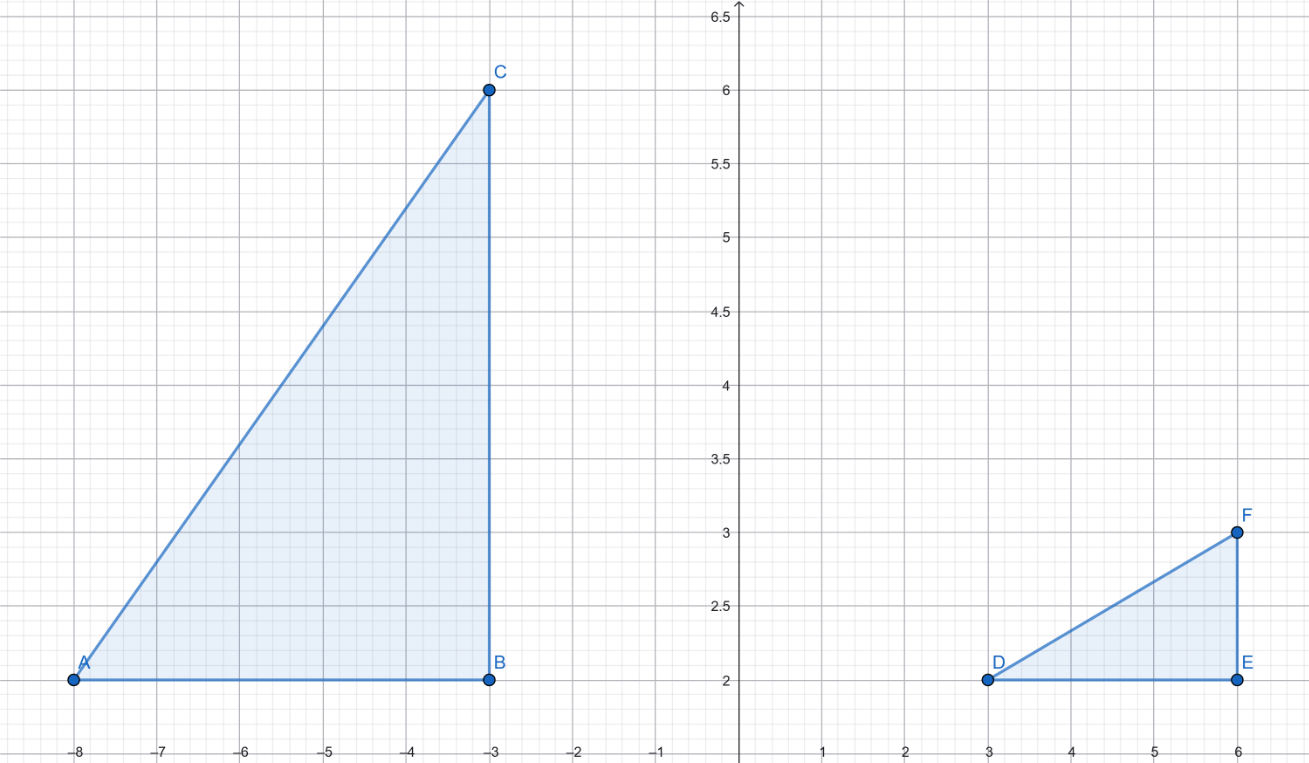
None, the triangles are not congruent nor similar